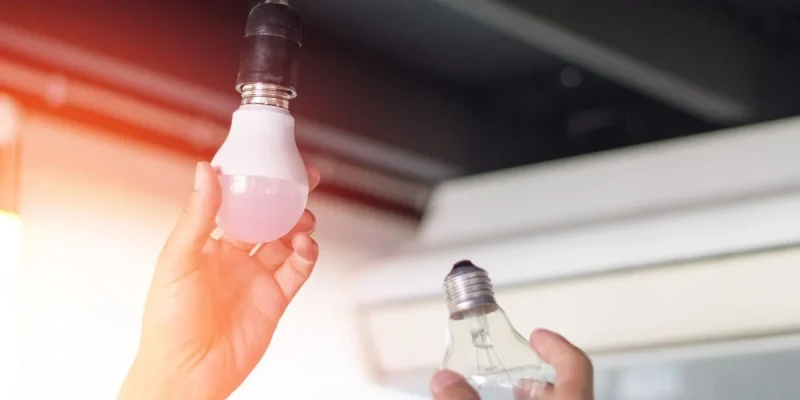Lighting technology has quietly transformed how spaces are designed, experienced, and even branded. Among the most versatile components in this shift are LED strip lights and LED modules widely used in signage, architecture, retail, and ambient lighting. Whether you’re outfitting a new build or upgrading an older system, knowing how to assess suppliers and manufacturers helps make informed, cost-effective decisions.
What Makes a Quality LED Strip Lights Manufacturer
Choosing an LED strip lights manufacturer isn’t just about who offers the best-looking product on the surface. At a deeper level, it’s about performance, consistency, and technical reliability.
High-quality manufacturers typically offer a wide range of options from SMD 2835 to COB configurations each designed for specific use cases, such as task lighting, decorative effects, or weatherproof outdoor installations. A reliable factory ensures their products meet international safety and efficiency standards (like CE, RoHS, or UL certifications). They also tend to highlight technical specs that matter: color rendering index (CRI), IP rating (for waterproofing), color temperature ranges, and voltage compatibility.
Just as important as the specs is the transparency of their supply chain. Brands that handle their own R&D and production often provide faster lead times and better consistency in quality.
Behind the Scenes: LED Strip Production Process
The production of LED strip lights might seem straightforward, but it’s a multi-stage process. It begins with the selection of LED chips brands like Epistar and San’an are commonly used for their durability and color consistency. These chips are then mounted onto flexible PCBs using high-speed SMT (Surface Mount Technology) machines.
After chip placement, the strips undergo soldering, coating, and waterproofing depending on their application needs. Testing at various checkpoints ensures voltage stability, uniform brightness, and longevity.
Manufacturers with dedicated production lines often integrate automated aging tests where LED strips are lit continuously for hours under elevated temperatures. This helps catch issues before the product reaches end users.
Spotlight: Choosing Reliable LED Module Suppliers
LED modules play a slightly different role than strip lights. While strip lights are great for linear and ambient applications, modules are better suited for signage, channel letters, or applications where directional lighting is essential.
Choosing LED module suppliers involves evaluating several layers of product performance. This includes the choice of lens types (for diffusion), viewing angles, heat dissipation design, and the uniformity of illumination.
Good suppliers offer modules with both wide-angle and narrow-beam designs, often with injection-molded housings for durability. Modules can be available in both 12V and 24V variants, allowing compatibility across projects. It’s also worth checking if the supplier provides options for color temperature from warm whites for cozy signage to cool whites for clean branding displays.
Additionally, longevity matters. Look for details like the number of hours rated for use (e.g., 30,000 to 50,000 hours), and whether the modules include integrated resistors or constant current drivers to handle power surges.
Comparing LED Strip & Module Suppliers
While both strip lights and modules use LED technology, their form factors and applications set them apart. LED strip lights offer a continuous beam and are ideal for linear runs like cove lighting or shelf edges. In contrast, modules are modular (as the name suggests) and better suited for layouts where even light is required across curved or custom surfaces.
Many large projects use both. A hotel, for example, might use LED strips for indirect corridor lighting while relying on LED modules behind signage or branded features.
So, rather than seeing them as competing products, think of them as complementary each doing what the other cannot do as efficiently.
Tips for Seamless Selection
Selecting the right product starts with understanding the requirements of your space. Here are a few helpful considerations:
- Environment: Outdoor or indoor? Wet or dry? Choose IP-rated products accordingly.
- Power setup: Will you need 12V or 24V strips/modules? Are you running them on constant voltage or current drivers?
- Color temperature: Match lighting tones to their environments cooler whites for commercial spaces, warmer tones for relaxation areas.
- Certifications: Look for proof of compliance with industry standards.
- Support: It helps if the supplier offers technical support, documentation, and after-sales guidance.
Asking the right questions upfront can save time and avoid compatibility issues later.
Installation & Maintenance Snapshot
Proper installation can significantly extend the lifespan of your LEDs. Strips need to be cut correctly at marked points and may require soldering or connectors for longer runs. Modules, meanwhile, often come with adhesive backings or mounting clips.
It’s also vital to match your LED components with the right power supply and controller systems. Overloading or incorrect voltage is one of the top reasons LED products fail early.
Regular maintenance is minimal, but periodic inspection for dust buildup, loose wires, or water ingress (for outdoor setups) ensures everything stays reliable.
Conclusion
Whether you’re exploring a new lighting concept or replacing outdated fixtures, LED strips and modules offer flexible, high-efficiency solutions. Understanding how to evaluate a led strip lights manufacturer or narrow down led module suppliers will help you avoid trial-and-error costs and make your next lighting project smoother from start to finish.














Comments